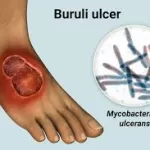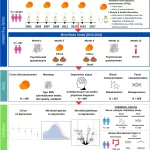California is experiencing one of its deadliest flu seasons in recent history, with over 900 fatalities recorded since the beginning of October, according to a report released Friday by the California Department of Public Health. This marks the highest number of flu-related deaths at this stage of the season in the past six years.
A quarter of those who have died were under the age of 65, with older adults remaining the most vulnerable demographic. Among the total fatalities, approximately 700 were individuals aged 65 and older. Additionally, at least 15 children have succumbed to the virus, including four teenagers from San Diego County, raising concerns among health experts.
Comparing past flu seasons, this year’s death toll has far surpassed previous records. By Week 7 of last year’s flu season, around 500 deaths had been reported, and the year prior recorded 600 at the same stage. However, both of those seasons saw deaths plateau by mid-February. This year, the number of fatalities continues to rise with no immediate sign of slowing.
Dr. Peter Chin-Hong, an infectious disease expert and professor of medicine at UC San Francisco, described the severity of this season as unexpected. “It’s a surprise,” Chin-Hong said. “It was projected to be an average season, but it is turning out to be anything but.”
The flu remains widespread, with test positivity rates still high. Health officials warn that hospitalizations will likely continue for several more weeks before the virus wanes as spring approaches.
Another unexpected trend is the relatively low prevalence of COVID-19 this season. “It is surprising, first of all, that we didn’t see much COVID, and secondly, that we saw a lot of flu,” Chin-Hong said. “And not just flu—bad flu which is making people seriously ill.”
As flu cases persist, health officials urge individuals to get vaccinated, even this late in the season. Chin-Hong emphasized the importance of flu shots, noting that even those who have already contracted one strain of influenza could still benefit from vaccination.
In addition to vaccination, Chin-Hong highlighted the role of antiviral treatments, such as Tamiflu, in reducing severe complications. Tamiflu can also be used preventatively within households where high-risk individuals are present. “The last really bad flu season was in 2009, for swine flu,” he noted. “Since then, it has kind of been regular flu seasons, until this year.”
Disclaimer:
This article is based on official health reports and expert analysis. Readers are encouraged to consult healthcare professionals for medical advice and to follow public health guidelines to mitigate the spread of influenza.










